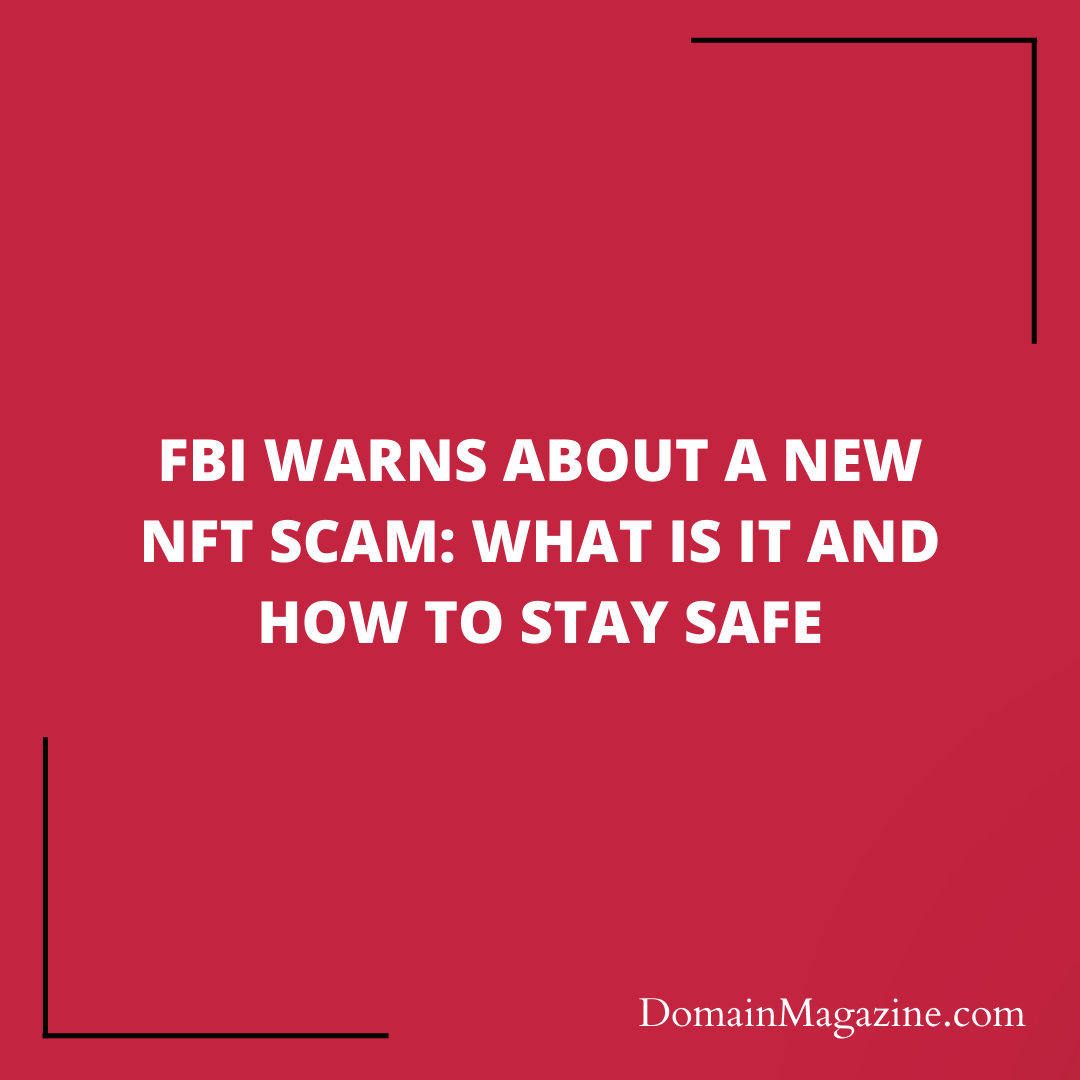In the ever-evolving digital landscape, where innovation often goes hand in hand with exploitation, a new shadow has emerged in the realm of non-fungible tokens (NFTs). The Federal Bureau of Investigation (FBI), has sounded an alarm about an emerging threat – a sophisticated NFT scam. As enthusiasts and investors dive headfirst into the world of NFTs, understanding the anatomy of this scam is paramount to safeguarding your digital assets and staying one step ahead of cybercriminals.
Decoding the Scam: NFT Impersonation Unveiled
In this intricate digital tapestry, the FBI’s latest warning brings into focus an alarming scheme – the NFT impersonation scam. This nuanced operation relies on the art of impersonation, as scammers adroitly mimic established NFT developers, slipping beneath the radar to ensnare unsuspecting victims.
Unmasking the Trickery: How NFT Impersonation Scams Work
Thanks to the FBI’s discerning lens, the inner mechanisms of this scam become clearer. Imagine a virtual masquerade, where nefarious actors infiltrate the digital identity of respected NFT creators. This calculated maneuver sets the stage for a grand illusion, with the scammer adeptly assuming the role of a trusted figure.
Playing on human psychology’s strings, scammers stoke the flames of urgency and FOMO (Fear of Missing Out) using phrases like “limited supply” and “surprise mint.” This orchestrated manipulation drives victims into rash decisions, a critical aspect highlighted by the FBI’s insights.
Enter the Web: Navigating NFT Scams with Prudence
Once enticed by the allure of urgency, victims find themselves entangled in a meticulously planned scheme. The curtains rise on cunningly constructed phishing websites, mirroring legitimate NFT platforms. Victims, drawn by the allure of exclusive opportunities, are coaxed into connecting their cryptocurrency wallets, inadvertently setting malicious smart contracts into motion.
Concealed behind these digital curtains, scammers execute a virtual heist, discreetly transferring cryptocurrency and NFTs from the unsuspecting to the opportunistic. The FBI’s revelation of this intricate choreography serves as a guiding beacon, revealing the pitfalls that lie ahead in this digital theater.

Strengthening Your Defenses: Safeguarding Your Digital Assets
For those entrenched in the domain name arena, the FBI’s focus on NFT scams is a beacon of preparation. Empowered with this knowledge, a proactive stance becomes your armor.
Embark on a journey of thorough research, dissecting surprise NFT opportunities for patterns, all while embracing skepticism as a shield against potential scams.
Navigate the sea of social media with a discerning eye, distinguishing genuine accounts from skillfully replicated ones. The FBI’s guidance empowers you to traverse the digital realm with caution.
As you venture onto websites requesting access to your cryptocurrency wallet, exercise unwavering vigilance. The FBI’s insights underscore the significance of spotting subtle signs of malice, from tweaked domains to fractured links.
Above all, let vigilance be your steadfast companion. If an opportunity gleams with excessive allure, it’s wise to proceed with caution. Armed with the FBI’s insights, you’re well-equipped to shield yourself against the siren call of fraudulent promises.
Empowering Safety: Reporting and Collaboration
In the face of adversity, unity becomes an unbreakable force. The FBI encourages swift action if you encounter or suspect an NFT-related scam. By reporting these incidents to the FBI’s Internet Crime Complaint Center (IC3), you become an active participant in the battle against cybercrime.
As stewards of the digital domain, we find ourselves at the crossroads of innovation and challenge. Equipped with the FBI’s wisdom, we navigate the NFT landscape with resilience, ensuring that our digital assets remain impervious to the shadows cast by deception.


Join the Discussion